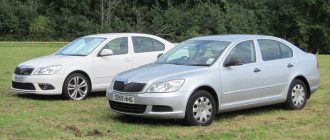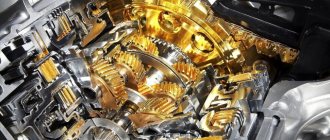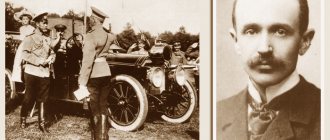In the Czech Republic
The Czech Republic is the main producer of the brand. In this country, the main production facilities of the concern are located in the same place as the headquarters. Mlada Boleslav is a small town with a population of only about 44 thousand inhabitants, located in the Central Bohemian Region, in the northern part.
Many work in several shifts, so activity does not stop for a minute. It is noteworthy that the time it takes to assemble a Skoda Octavia does not exceed 3.5 hours. Most of the operations are automated. Technologies are constantly being improved and updated. All car models are assembled in Mlada Boleslav, including the new Skoda Octavia. In addition, there is a technology museum on the territory of the plant.
In just one day, about two thousand cars come off the assembly line. Since 1991, the plant has assembled more than 10 million cars.
There are two more concern plants in the republic: in Wroclaw and Kwasiny, but none of the Skoda Octavia models are produced there (they are focused on other models).
Czech
Skoda Octavia production line in the Czech Republic
The main plant in the Czech Republic is located in the city of Mlada Boleslav, where the main production of the company is concentrated. In addition to the Octavia model and spare parts for it, components for Volkswagen and Audi are also produced here. The Skoda Octavia Tour and Skoda Octavia are also assembled in the Czech city of Vrchlabí. Despite the presence of a large number of jobs at the plant, the bulk of the work falls on automatic robots.
They are designed to perform a variety of operations, controlled by people. The plant in Mladá Boleslav is considered one of the most modern in Europe, which was achieved as a result of constant modernization of equipment and German participation in management.
Every day 2,000 cars leave the plant’s assembly line, with plans to increase to 3,000 units. Every year, 700,000 cars are produced worldwide; the third generation Skoda Octavia, which was first presented to the general public in 2013, is assembled in the Czech Republic.
Russia
In Russia, the Skoda Octavia is assembled at two factories: in Kaluga and near Nizhny Novgorod. There were no complaints about the quality of the car from Russia. The state is trying to support the purchase of domestically produced cars by providing compensation and discounts on loans.
VolksWagen GROUP RUS, Kaluga
It is located 170 km west of Moscow. Up to 225 thousand cars are produced per year, among which is the Skoda Octavia. Skoda Octavia of the first and second generations is assembled in Kaluga. The plant started in 2007, and by 2013 more than 700 thousand units of passenger cars had been assembled.
At GAZ facilities
The huge Gorky Automobile Building Plant is located in Nizhny Novgorod. In 2011, VolksWagen GROUP RUS signed a contract for the production of Octavia at GAZ facilities. The planned production volume is 130,000 cars per year. So far, the third generation Skoda is produced exclusively in Nizhny Novgorod. VW Jetta and Yeti are also being built in Russia.
At Russian enterprises there is a full cycle of car production, including welding, painting and running-in.
What's the result?
If we talk about the difference in Skoda production between Russia and the Czech Republic, then in technological terms it is not very different, which is generally confirmed by reviews from Skoda customers in Russia, who have almost no complaints about the quality of domestic assembly. The nuances are exclusively in scale, model range and, of course, automation of work. What's different is the atmosphere. If in Russia the Skoda auto production is precisely a business project, a branch, rather closed and located at a distance from the rest of life, then in Mlada Boleslav Skoda is an integral part of the Czech Republic, a symbol, a whole automotive world, turned into a technoland with complete immersion in the century history and life of the brand. It is not surprising that the majority of the country's population does not consider buying anything else...
SHOW
COLLAPSE
To paraphrase the first lines of the novel “The Golden Calf,” we can say: “Motorists must be loved.” Future and present. The first ones want to see under the hood of the foreign car they like a tag with the proud inscription Made in..., and then the homeland of the chosen brand. The latter, wise with experience, understand that this is practically impossible. And there are a number of economic reasons for this, which boil down to a single factor - the cost of the car. All modern leaders of the global automobile industry are prosperous, if not rich, countries. Accordingly, their wages are high, which will immediately affect the cost of the car. That’s why automakers are moving production to other countries, where the standard of living and wages are lower, and, accordingly, the car will be cheaper. Plus, it is possible to avoid various kinds of customs peculiarities inherent in importing a car from abroad.
"ASIA AVTO", Ust-Kamenogorsk, Kazakhstan
The Kazakhstan Skoda Octavia center is located on the outskirts of Ust-Kamenogorsk. All three generations of cars are manufactured at the plant's facilities. By February 2015, the range of models produced under the Czech brand reached ten. Among them are sedans, hatchbacks and 4x4 crossovers.
ASIA AVTO production lines provide the complete technological process for assembling new cars: from creating an engine and transmission to diagnostic testing and running-in of a freshly assembled unit. As a result, the build quality is very high.
New Russian-assembled Skoda Octavia: why is softness not a vice?
When eight kilometers remained to the village of Belskoye, on the outskirts of which a wooden bell tower from the early 20th century has been preserved, the road finally turned into a set of potholes of different sizes. We had matrix LED headlights, lane keeping assist, active cruise control and a Canton audio subwoofer instead of a full spare tire. The salon was decorated with two-level contour lighting, a ten-inch multimedia screen shone - everything that distinguishes the new Skoda Octavia liftback from its predecessor. But when a car is just a red triangle on a navigation map in the middle of a forest, all this is absolutely useless. Russia is not changing as rapidly as Octavia.
- Here she is!
In front of the dealership building in Ryazan there was a gray Skoda with an advertising sticker - and from five meters I mistook it for the new Octavia. But a detailed examination of the nameplate on the trunk showed that this is a Superb. It seems to me that this is a typical mistake - after all, the Octavia has begun to look more expensive. Especially at the first moment: textured optics, a rib on the side, a shiny grille. True, this design has an unusual effect: the longer you look at the Octavia, the more contrived its appearance seems, and those same ribs with a varying offset from the sill line can be mistaken for the consequences of a poor body repair.
But clients seem to like it. Most of the first batch of cars had already been prepaid, and the entire time we spent at the dealership, there were always people interested in the new Octavia. Actually, we went to Ryazan because there were no test cars with license plates in Moscow at that time.
Reflector LED headlights, 16-inch wheels, free white color... But even in its modest configuration, the new Octavia does not seem like a simpleton. Just a carcass
There is only one power unit for now - before this, the combination of a generally reliable 1.4 TSI turbo engine of the EA211 series (it can easily reach two hundred thousand kilometers) and an eight-speed Aisin automatic transmission existed on the Russian market for less than a year on the Skoda Karoq crossover. In general, it is interesting that as soon as the DQ200 “robot” was brought to fruition, and the clutch and mechatronics service life of gearboxes produced after 2014 exceeded 150 thousand kilometers, they decided to abandon it. But the comfort of driving in city traffic with an automatic transmission is definitely higher.
Another significant change under the hood is the new shaped expansion tank. For more than twenty years it was spherical, and now it has become a banal box.
If you look at the new Octavia from below, you won’t see anything revolutionary. For example, the front suspension arms are the same as on the previous generation car, and many other parts are also interchangeable. In general, this is a plus; the situation with reliability will not change.
The full version is available only to subscribersSubscribe now
I'm already subscribed
Other places
Cars of the Czech brand are also produced in Slovakia, India and China (the leader in car production for the Asian market).
Bratislava, Slovakia
Not far from the capital of Slovakia there is a small automobile production facility that has been producing cars of the Czech brand since 1993. The third generation has not yet reached the Slovak plant, so for now only the second generation Skoda Octavia is produced there.
Assembly of the 2 millionth anniversary Skoda Octavia has been completed at a plant in Slovakia
Aurangabad and Pune, India
India has a rapidly growing automobile market. At the moment, at the plant near Aurangabad, as well as in Kaluga (Russia), only the first two generations of Skoda Octavia cars (with the corresponding engines) are produced. In addition to them, various Audi models with different engine sizes are also assembled there, however, VolksWagen GROUP does not yield to Audi the leading position in distributing the brand in the Indian market.
Specifications
The new Czech crossover is based on the MQB-A0 platform, which imposed certain restrictions on possible equipment. In particular, the Skoda Kamiq will be produced only in front-wheel drive. But the manufacturer will offer 5 power plant options with this model.
- Liter petrol. Power is 95 hp, torque does not exceed 175 N*m. The unit is combined with a 5-speed manual transmission.
- Liter petrol with turbocharger. The maximum output does not exceed 115 hp, the thrust level reaches 200 N*m. A 7-speed robotic gearbox will be offered with this engine.
- 1.5-liter petrol with turbocharger. The total power is 150 hp, the torque is 250 N*m. With this engine, the crossover is equipped with a choice of 7-speed robotic or 6-speed manual transmission.
- 1.6-liter diesel. The recoil level reaches 115 hp, thrust - 250 N*m. Similar gearboxes will be offered with the diesel unit.
- liter, running simultaneously on gasoline and methane. Maximum power is 90 hp, thrust level is 160 N*m. This setup comes with only a 6-speed manual.
Apart from the latest powertrain, the most notable is the 1.5-liter engine. It is complemented by a system that, if necessary, turns off two of the four cylinders. This technology increases the level of engine efficiency. The new Kamik can come to Russia with any of the listed engines. But, probably, at first the manufacturer will limit itself to supplying crossovers with 1- and 1.5-liter units.
The Czech model has an active suspension. Depending on the selected driving mode (sport, economy or standard), it can lower by 10 mm.
Fuel type Petrol Emission standard EURO 6
Power 95 hp Torque
175 Nm129.07 lb-ft
Engine position Front, transverse Number of cylinders 3 Cylinder position In-line Number of valves per cylinder 4 Fuel system Direct injection Turbine Turbocharger










